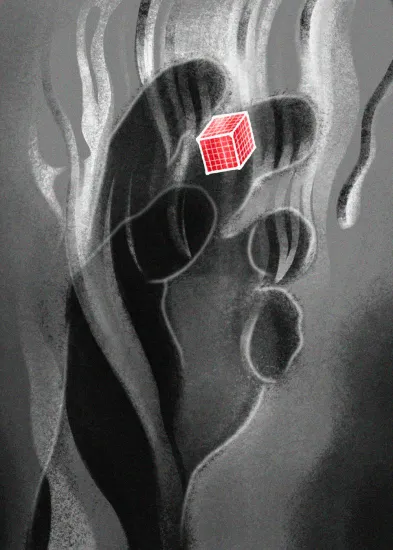
Illustration by II
On a Tuesday in January, a rising investment superstar made their Public Broadcasting Service debut on an episode of the show Frontline. After a run of incredible returns in tech stocks, this internet whiz was being compared to legendary investors like Warren Buffett or mutual fund manager Peter Lynch, but for the new economy. This manager had shown an uncanny ability to identify companies whose use of online platforms and digitally enabled business models were disrupting traditional, old economy competitors. But more importantly, this PM was able to buy these companies before their stock prices surged.
“The competition is fierce and the top mutual fund managers are like modern-day alchemists, creating magical market gains,” narrator Joe Nocera told viewers. “And right now, no one has the golden touch more than this man, Garrett Van Wagoner.”
Of course, this was January 1997, not 2021. At the time, Garret Van Wagoner was already seen as an absolute stock picking genius. And after two more years of strong performance, the Van Wagoner Emerging Growth Fund capped it off with a 291 percent return in 1999. Investors poured in, chasing the hottest of hot hands. The fund’s assets under management swelled to nearly $1.5 billion that year, up from just $190 million one year prior.
Investors who had followed Frontline’s coverage and invested $10,000 in Van Wagoner’s fund in January 1997 would have seen their investment grow to roughly $45,000 by the beginning of 2000, an annualized return of approximately 66 percent over those three years.
But as we all know, the story didn’t end there. Over the next several years, the internet bubble collapsed, and the NASDAQ fell from a peak just over 5,000 in early 2000, shedding a cumulative 78 percent before hitting a low of 1,114 in October of 2002. Van Wagoner continued to struggle on for quite some time until finally throwing in the towel in 2008. The final tally for investors was a staggering 63 percent loss of investor capital, and an annualized return of negative 7.8 percent per year since inception.
The one-time dot.com wunderkind was exposed as simply having extremely concentrated exposure heavily linked to a white-hot sector — not a magical touch after all.
Two decades later, Cathie Wood, the bespectacled guru of innovation who runs ARK Investment Management, is the hottest name on the Street. Wood is widely celebrated for her ability to spot innovative companies changing the future of business, like Tesla, Square, and Roku. Over the course of the last year, assets under management at ARK — all via a series of actively managed ETFs — have risen roughly five times. This is in no small part because the funds under Wood’s impressive stewardship returned an eye-popping average of 120 percent last year.
The firm’s flagship offering, the ARK Innovation Fund (ticker symbol ARKK), posted a whopping gain of 153 percent the previous year. Since its launch in October of 2014, ARKK has averaged annualized returns of 33.6 percent, destroying the measly gains of 10.7 percent put up by the S&P 500 index during the same time. An investor with the foresight to deposit $10,000 with ARKK on the first day of trading would be sitting on an account worth $62,611 as of March 5.
But once again it’s not entirely clear that this incredible run of performance is due to skill alone. ARKK has certainly outperformed the S&P, but it has done so with a volatility of 30 percent, nearly twice that of the broader market. The surging performance of the riskier tech sector is clearly driving the risk and return of the fund. Indeed, ARRK has a beta of nearly 1.1 even to Vanguard’s Information Technology Index Fund ETF, a passively managed product which itself has gained 23 percent per year since the fourth quarter of 2014.
And with tech stocks beginning to correct, ARRK is falling even harder than most. The ETF has plunged more than 25 percent since its peak just three weeks ago, almost exactly three times the 8.4 percent decline of the VGT. ARKK’s beta to the tech index fund during that stretch has jumped to 1.73, meaning it has participated to a far greater extent in the downside volatility than it captured on the upside — a clear sign of embedded structural overweights versus security selection skill.
The past is not necessarily prologue; the market today is certainly not an exact replica of the conditions present during the dot.com bubble. Nor is this to say that Ms. Wood is not a brilliant investor. Over the course of a fairly storied career, first as a renowned economist before moving to the portfolio manager side, she has been consistently known for the accuracy and foresight of her observations, which often run contrary to popular wisdom.
However, chasing the most recent top performers is a recipe for disaster for investors. Both individual and institutional investors alike are similar in their propensity to engage in this behavior, and the investment returns for both are the worse for it.
Consider this more a cautionary tale that today’s hot hand can often become tomorrow’s hot potatoes.





